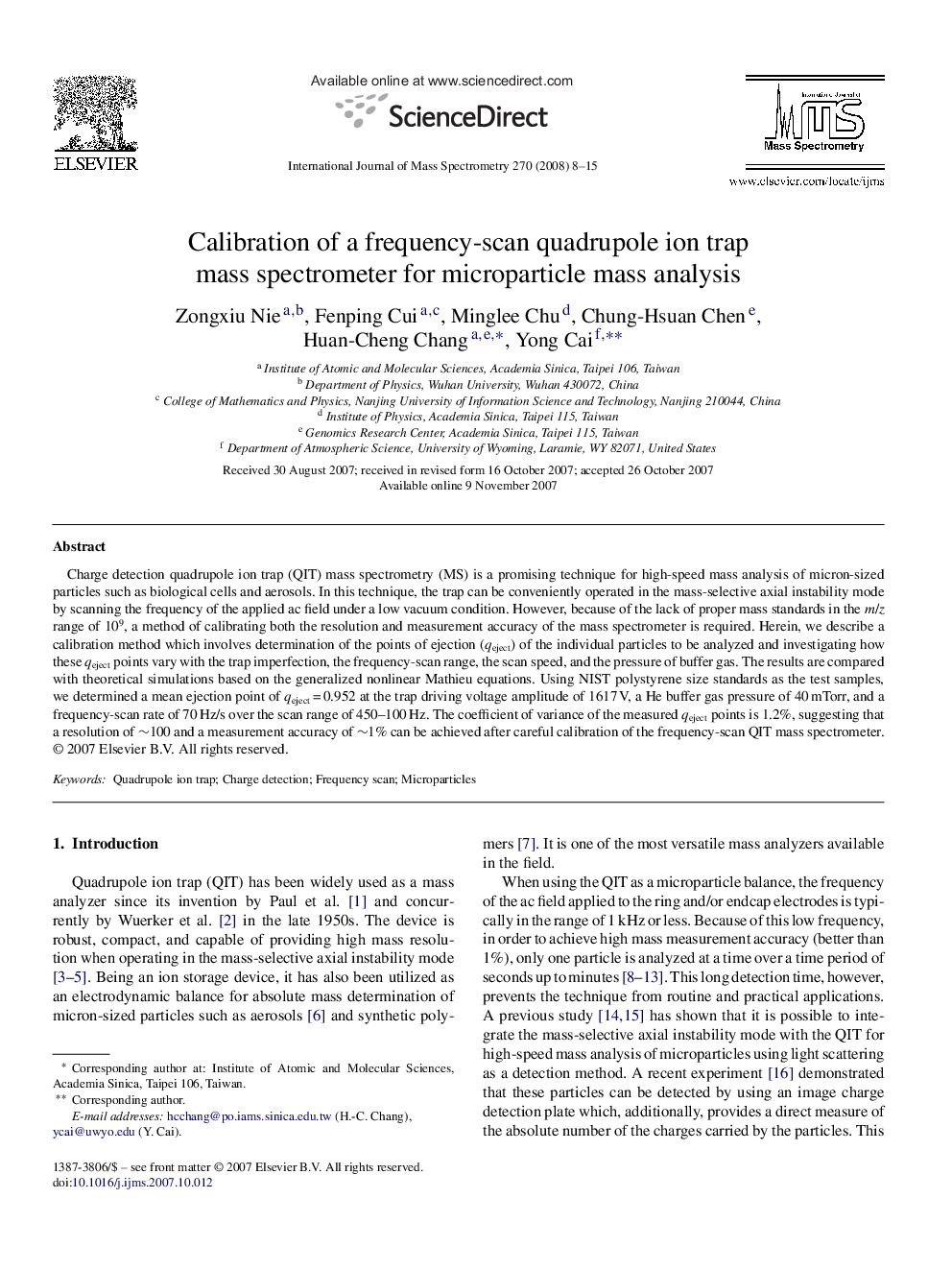| Article ID | Journal | Published Year | Pages | File Type |
|---|---|---|---|---|
| 1194447 | International Journal of Mass Spectrometry | 2008 | 8 Pages |
Charge detection quadrupole ion trap (QIT) mass spectrometry (MS) is a promising technique for high-speed mass analysis of micron-sized particles such as biological cells and aerosols. In this technique, the trap can be conveniently operated in the mass-selective axial instability mode by scanning the frequency of the applied ac field under a low vacuum condition. However, because of the lack of proper mass standards in the m/z range of 109, a method of calibrating both the resolution and measurement accuracy of the mass spectrometer is required. Herein, we describe a calibration method which involves determination of the points of ejection (qeject) of the individual particles to be analyzed and investigating how these qeject points vary with the trap imperfection, the frequency-scan range, the scan speed, and the pressure of buffer gas. The results are compared with theoretical simulations based on the generalized nonlinear Mathieu equations. Using NIST polystyrene size standards as the test samples, we determined a mean ejection point of qeject = 0.952 at the trap driving voltage amplitude of 1617 V, a He buffer gas pressure of 40 mTorr, and a frequency-scan rate of 70 Hz/s over the scan range of 450–100 Hz. The coefficient of variance of the measured qeject points is 1.2%, suggesting that a resolution of ∼100 and a measurement accuracy of ∼1% can be achieved after careful calibration of the frequency-scan QIT mass spectrometer.
